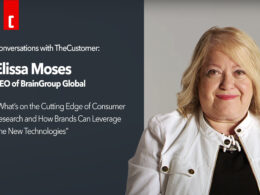One of the key measures that influences your company’s stock price is Earnings Per Share (EPS), which is reported quarterly. There are many ways that EPS can be massaged in the short run . Recently stock buybacks have been a huge way to increase EPS. Another short-term move is to run strong discount promotions to boost sales. But what business school modeling experts and Wall Street are exploring these days is the long run fundamental value of having a strong customer base to drive corporate value.
by George Wiedemann
As a CEO I paid the price for boosting sales with a product and new customers that proved not to be sticky. For 6 quarters sales went up, and the stock price went up, but the first quarter that sales stalled because of customer defection, the stock headed back down. Do not go down this path with your team as the short-term gains will not prove worth it.
Customer connectivity and big data are changing how the C-suite needs to look at corporate valuation. Naturally, it makes sense that the value of your company depends on people buying your products and services. It also makes sense that a stronger and more strategic bond with customers makes for greater company value. But before this age of micro-moment digital connectivity and the resulting big data flows, there were no solid, reliable, current measures of the customer/brand relationship that allowed for accurate, up-to-date customer valuation, much less for rolling up those customer valuations into an estimate of the overall valuation of a company.
Today, the first steps in this direction have been taken. A small group of prescient financial analysts have been developing algorithms that rely on publicly disclosed customer metrics, which do a better job of predicting corporate value than do recorded financial measures – EPS from the last quarter and all the financial data going into it.
This requires a change in perspective by the C-suite and frankly all investment businesses putting capital in enterprises: the budgets directed to bonding customers to the enterprise must now be managed with understanding their impact on corporate value. Fair notice to C-titles: My charge is to spend the rest of my career advocating for an approach to running companies that connects the dots between corporate value and Relationshipping.
At the 2018 DRUM Fast Track Summit in Atlanta, Dan McCarthy, Assistant Professor of Marketing at Emory University’s Goizueta School of Business, introduced attendees to his work on customer-based corporate valuation (CBCV).
Dan is a member of a pioneering group of quantitative modelers using customer metrics to develop enterprise valuation algorithms that go beyond the standard discounted cash flow (DCF) valuation methods. He joined three other accomplished executives in this field to form Theta Equity Partners. The enterprise now serves some 25 clients in the financial services sector (think private equity, hedge funds and venture capital firms), as well as public companies and consulting firms.
One of the early analyses that raised a lot of interest in Theta was a study by two of their co-founders on Wayfair, Inc. (NYSE: W). At the time their work implied that the stock was overvalued. This conclusion was waved off by most within the investment community, but there were a couple of funds following the work that shorted the stock. When the next earnings period revealed the softness that Theta predicted, the stock went down. Not only did the short funds do well, the event helped put Dan and Theta on the map.
It happens all the time that C-suites pump the current quarter sales by pushing deals to un-sticky customers, only to have them leave in the next quarter and earnings stall or fall. If the C-suite wants to build corporate value they have to focus on and invest in Lifetime Customer Value (LTV) and building a base of quality customers.
Have you been able to track your company’s marketing spend to see how it builds the customer base based on LTV (long term value)? Building this connection will help you build a your base with optimized budgets, sticky, valuable customers and optimized enterprise value. If you need more help, please reach out. A lot of companies are struggling with this now.
 George Wiedemann is founder and former CEO of Grey Direct, former CEO of Responsys, and former CEO of The DRUM Agency. He is now founder and current CEO of Relationshipping Consulting, focusing on bringing efficiencies to large-scale enterprises through deep budgetary analysis and process alignment. George is also a frequent contributor to TheCustomer.
George Wiedemann is founder and former CEO of Grey Direct, former CEO of Responsys, and former CEO of The DRUM Agency. He is now founder and current CEO of Relationshipping Consulting, focusing on bringing efficiencies to large-scale enterprises through deep budgetary analysis and process alignment. George is also a frequent contributor to TheCustomer.
Photo by Mark König on Unsplash.














2 comments